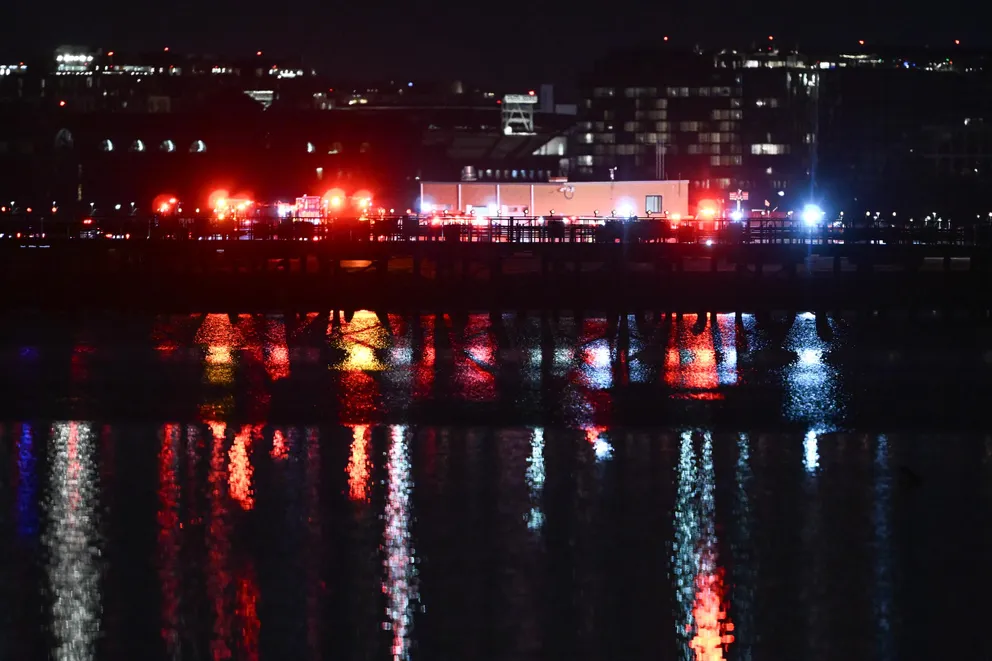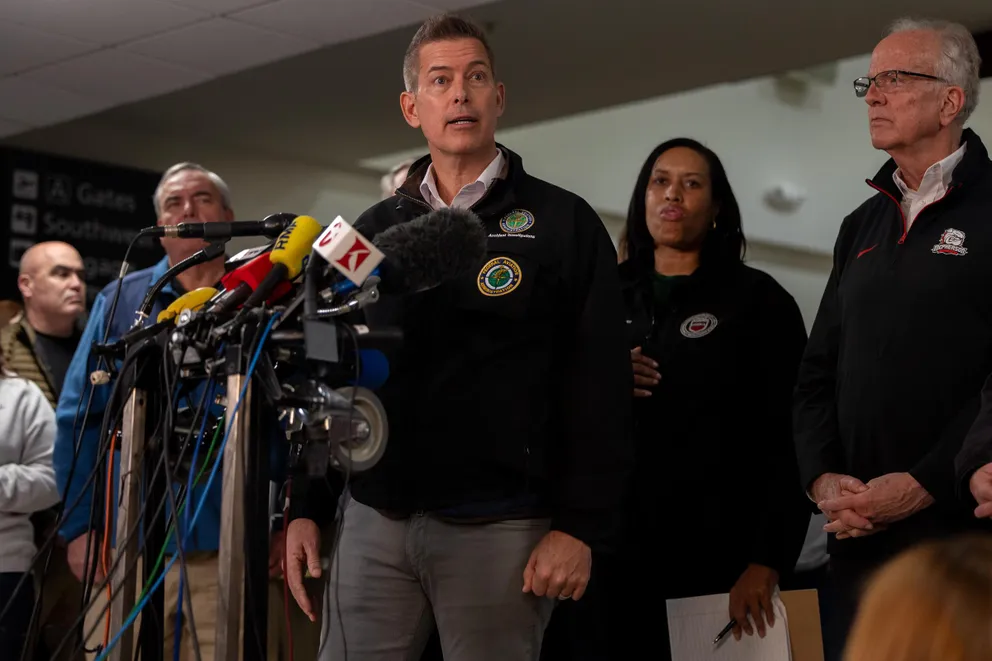A midair collision near Reagan National Airport sparked a large-scale search and rescue mission in the freezing Potomac River. Newly released air traffic control audio provides a haunting glimpse into the moments leading up to, during, and following the crash, shedding light on the tragic event.
The search and rescue efforts began after an American Airlines passenger jet collided midair with a U.S. Army Black Hawk helicopter near Ronald Reagan Washington National Airport.
In a startling development, air traffic control audio has surfaced, providing crucial details about the moments leading up to the crash. The recording captures an air traffic controller asking the helicopter crew, “PAT 2-5, do you have the CRJ in sight?”

A view of the scene after a regional plane collided in midair with a military helicopter and crashed into the Potomac River in Washington, D.C. on January 30, 2025. | Source: Getty Images
Just moments after, the controller gave the instruction, “PAT 2-5, pass behind the CRJ.” Before the crash, the Black Hawk pilot confirmed visual contact with the other plane, saying, “PAT 2-5 has the aircraft in sight, request visual separation.”
Then, less than 13 seconds before the collision, the audio captured gasps from the tower, followed by a loud “oooh,” signaling the moment of impact. In the aftermath, air traffic controllers immediately informed another pilot about the disaster unfolding in real-time.
“I’m not sure if you heard what happened earlier, but there was a collision on the approach end of 3-3. We’re going to halt all operations for the indefinite future, so if you’d like to return to the gate, it’s probably a good idea to coordinate with the company. Let me know how you want to proceed,” the controller said.

Secretary of Transportation Sean Duffy speaking at a press conference with other government officials on the rescue efforts following a collision between an American Airlines plane and an Army helicopter in Washington, D.C. on January 30, 2025. | Source: Getty Images
Another pilot who witnessed the collision reported it to air traffic control, stating, “Yeah, we were on short final, and we saw flares from the opposite side of the Potomac.” Meanwhile, an approach controller confirmed the severity of the situation, adding, “Apparently both aircraft involved are in the river, a search and rescue will be ongoing.”
The crash caused major disruptions at Reagan National Airport, forcing flights to be rerouted to alternative destinations.
Jack Potter, CEO of the Metropolitan Washington Airports Authority, addressed the heartbreaking event, explaining that American Airlines had set up a support center within the airport to assist the families of those on board.
“We’ve directed the families there, and there are counselors there to work with the families,” he stated. Rescue teams faced immense difficulties in retrieving victims due to the Potomac River’s depth and challenging conditions.
The United States Geological Survey (USGS) reports that the river has an average depth of 24 feet, though certain areas near Morgantown, Maryland, plunge as deep as 107 feet. The freezing temperatures and powerful currents make recovery operations even more challenging.

President Donald Trump addressed the tragedy on his Truth Social platform, expressing criticism over the events leading up to the collision. “The airplane was on a perfect and routine line of approach to the airport. The helicopter was going straight at the airplane for an extended period of time,” he stated.
“It was a CLEAR NIGHT, the plane’s lights were shining brightly—so why didn’t the helicopter ascend, descend, or change course? Why didn’t the control tower give direct instructions instead of just asking if they saw the plane? This is a terrible situation that seems like it should have been avoided. NOT GOOD!!!” he concluded.
This tragic midair collision serves as a stark reminder of other recent aviation accidents, such as the helicopter crash into a radio tower in Houston back in October 2024.
As rescue teams push forward and investigators piece together the final moments leading up to the crash, the audio recordings provide a haunting glimpse into how rapidly catastrophe can strike. These recordings will play a key role in uncovering what led to this devastating disaster.

